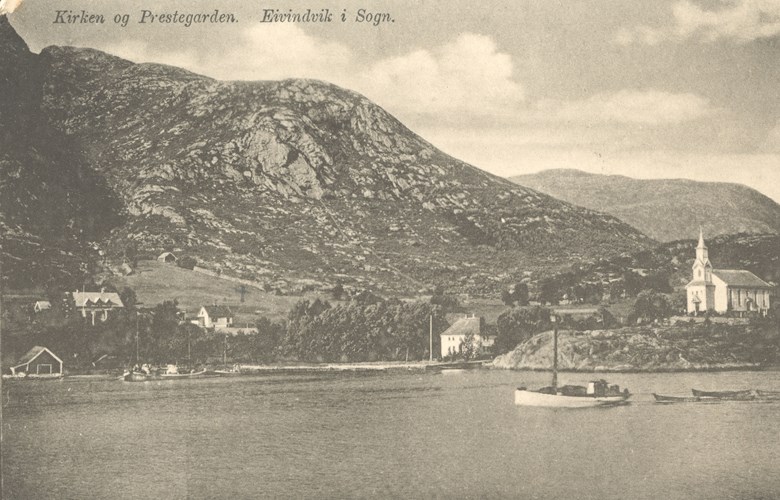Inspiration from the west
The cross is 2.65 metres high, 1.3 metres wide, 8 - 10 centimetres thick, and is made of Hyllestad stone, a mica schist interspersed with garnet. The stone is shaped in such a way that the cross arms are arched, which have given the stone the term "Anglian". At the front, facing the other cross only a few hundred metres away, is a 63-centimetre-high and 55-centimetre-wide Latin cross, carved in a one-two-centimetre-deep relief. With its Anglian form, the cross is unique among the 60 stone crosses in Norway. This may indicate that it was made by foreign sculptors. The tradition of erecting stone crosses probably comes from the British Isles.
Olaf or Haakon
Just below the Anglian cross there is a water source that is said to have been a pagan sacrificial source. According to one legend, Saint Olaf erected the cross in the field of Krossteigen to destroy the pagan rites linked to the source. Another legend has it that Olaf shot three arrows in different directions at the court site and then erected a cross where each arrow fell to the ground. Bishop Fridtjov Birkeli (1906-1983) who has studied these ancient crosses, thinks that it is more likely that it was Haakon the Good (brought up at the court of the English king Athelstan) who raised the cross with Bishop Sigfried of Glastonbury in the south west of England. The flat area below the cross is highly suitable as a court site and resembles other court sites, such as Thingvellir on Iceland. King Haakon is said to have erected the cross to mark the christening of the court site. In such a context both stone crosses at Eivindvik play an important part in establishing the exact location of the "Gulating".
The location
In a document dating from 1626 we find the earliest description of the crosses at Eivindvik. There is no indication that the Anglian cross has been moved. On the contrary, there is evidence that the location has been carefully selected. There is actually a solar observation linked to the Anglian cross. On winter solstice, 22 December, the sun rises just high enough to shine on the whole cross.
The cross today
As the cross leaned forward, the "Historisk Museum" put the cross back in a vertical position, financially supported by the municipality of Gulen. In a survey report from 1994, the cross is considered to be in a fine state. A memorial erected at Floli in connection with the choice of "Gulatinget" becoming the county's millennium site, is evidently inspired by the crosses. The two crosses at Eivindvik are also used as symbols in the municipal coat of arms for Gulen.





